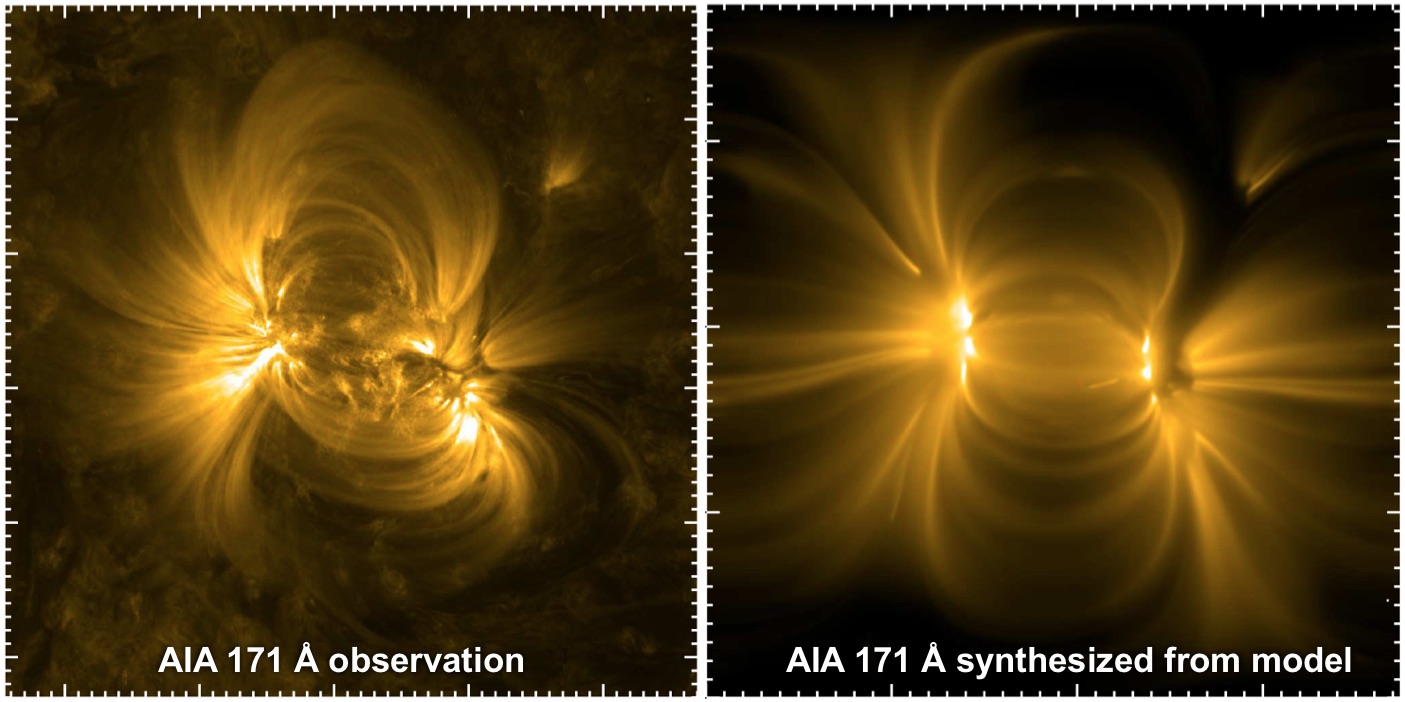
The Sun is surrounded by a hot outer atmosphere, the corona. Observed in extreme-UV and X-ray wavelengths, the appearance of the corona is dominated by loops that show million Kelvin hot plasma being trapped by the magnetic field. Loops come in a wide range of temperatures and lengths. The shortest loops are barely resolvable with current instruments, while some can reach the length of a good fraction of the solar radius. Different ideas have been proposed on how the plasma in these hot loops are heated, including field-line braiding, waves or reconnection. However, it is not simple to find suitable observables to actually distinguish these processes, even with complex numerical simulations. Over last two decades, 3D numerical models became available that can produce a loop-dominated corona with increasing realism. These models can give good descriptions of the temporal variability, spatial structure, or systematic Doppler shifts seen in extreme-UV emission lines, suggesting that, overall, we start to understand the corona. However, despite all the success, there are quite a few rather simple questions that remain puzzling. For example, why is the cross section of many loops not changing along the loop? Why do some loops appear very stable over long times, much longer than the expected cooling times? And a very fundamental question, what actually is a coronal loop? 3D models show a very high level of spatial and temporal intermittency that poses the question if a loop might just be an illusion of integrating along the line of sight. I this talk I will summarise some selected problems, solved and unsolved, and show some ideas and prospects for future observations.
